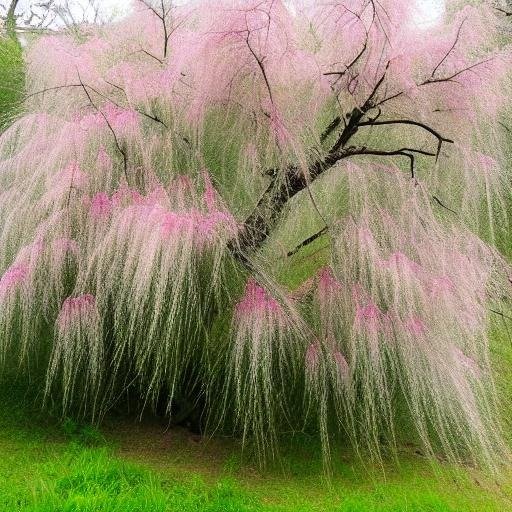Wax Rose
The Wax Rose is an attractive, semi-carnivorous shrub that grows throughout most all of the tropical and temperate regions of Derkomai. Wax Roses trap insects and other small bugs via sticky, corrosive, poisonous wax secreted from tiny leaves covering long, thin, flexible, stringy branches drooping nearly to the ground from multiple upright stems. In some respects, the Wax Rose resembles a small cross between a weeping willow and a silk tree. It bears beautiful, tiny, rose-like flowers year-round along the branches, and the wax is intoxicatingly fragrant. The flowers and fragrance attract insects and other small bugs. Some small animals are also attracted to the flowers and fragrance and are entrapped in the stringy branches. The intoxicating effects of the wax causes the insects, bugs, and small animals to lose consciousness and die. As the wax dries, the trapped organism drops to the ground below the Wax Rose shrub, fertilizing and providing the shrub with vital nutrients as it decays. The ground beneath Wax Rose shrubs is typically littered with the husks and skeletons of the organisms that have succumbed to the deadly Wax Rose trap.
The corrosiveness and poisons of the wax of the Wax Rose can be neutralized by heating the wax, leaving the intoxicating fragrance behind. The heated and purified wax is used in perfumes and incense and to add fragrance to candles. Gathering the wax is hazardous, and requires branches to be cut from the shrubs, carefully heating them for several hours to extract and neutralize the acid and poisons without burning the leaves or wood, then collecting the wax that has melted out of the leaves. Breathing smoke from burned Wax Rose wood or leaves is nearly always fatal. Because of the hazards of breathing the air around the Wax Rose, breathing smoke from burned wood or leaves, and handling the leaves and branches, the wax from Wax Roses is very expensive.
Basic Information
Genetics and Reproduction
The flowers from Wax Rose bushes produce small, sticky, spiky seeds that stick to animals that fly into or move past the bushes. The seeds are very toxic and irritating, so any animal that gets seeds into its mouth while trying to extract a seed from its hide soon dies, providing the seed with nutients for its germination and growth as it decays.
Growth Rate & Stages
Wax Rose bushes grow relatively slowly, as they need nutrients extracted from decaying insects and animals to grow, especially as they mature. They grow faster and larger in areas with lots of flying insects, small birds, and small animals that the Wax Rose bush is able to trap, such as temperate and tropical lowlands near lakes and ponds. In drier and colder areas, they are smaller and more rare, found predominantly near warm springs or other warm microclimates.



Comments